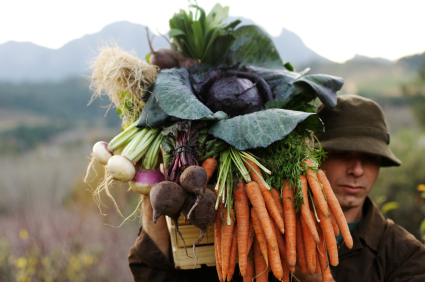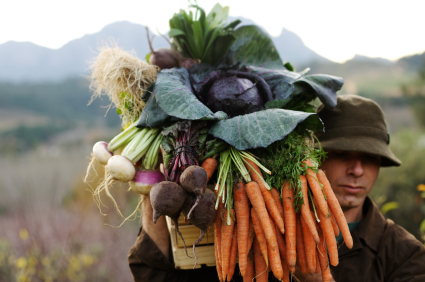 Not your father’s Corn Belt. This development in Illinois managed to pass somewhat under the radar, probably because it took place during the dog days of summer. But it’s still a big deal — Illinois has a new law that starts building the infrastructure for a real regional food system:
Not your father’s Corn Belt. This development in Illinois managed to pass somewhat under the radar, probably because it took place during the dog days of summer. But it’s still a big deal — Illinois has a new law that starts building the infrastructure for a real regional food system:
The legislation establishes a council to develop a fresh farm and food system in the state, and it creates a system that allows buyers for state agencies to pay up to 10 percent above the lowest bid when purchasing locally grown foods. It also sets a goal for state-owned agencies to increase their purchase of locally grown foods each year so that 20 percent of their food purchase is spent on Illinois-grown foods by 2020.
Currently, an estimated 4 percent of the money Illinois residents spend on food each year is for products grown in the state, and just several hundred of the state’s 76,000 farmers are producing for the local market, according to a task force report.
That last statistic is astonishing. Illinois has tens of thousands of farmers and only one half of one percent of them sell their products in their home state. The new law is all the more impressive when you realize that Illinois is second only to Iowa in corn production — we’re talking the heart of the Corn Belt here. It’s quite a statement when a top agricultural commodity state has decided it’s time to diversify its food production. And make no mistake, institutional buyers are exactly what growers need to have the confidence to give up their reliance on commodity crops, which they can always sell to the local grain elevator. Asking a farmer to grow something that he or she can’t hope to sell isn’t exactly a recipe for success. But what happens if they know the state will not only buy their produce, but pay a premium for it? I’m smelling a win-win here.
Indeed, the potential dollar figures are tremendous, even for just a single state. According to the Illinois Local Food, Farm, and Jobs Task Force, the state spends $48 billion on food — with almost all of that money flowing out of state. And make no mistake, much of the energy for this law comes from a growing understanding of the positive economics of local spending. Yes! Magazine has a nice graphic explaining what some refer to as the “Local Multiplier Effect” of your purchasing decisions. This concept is built around the estimate that, while 15 cents of your dollar spent at a corporate chain is reinvested in the community, 45 cents of your dollar is reinvested when you shop at an independent local business. So keeping more of your money in your community “multiplies” the effect of that spending. In an era when many question where future economic growth, not to mention jobs, will come from, allowing local spending to power a local industry like food production starts to make real economic sense.
Grist contributor and author Ken Meter — a strong advocate for the economic benefits of moving farmers off of commodity crops — has looked closely at the issue. He has spend the last few years studying net cash flows from regional food production and consumption, including in his calculations agricultural inputs costs like seed and fertilizer, farm income, farm subsidies and total food purchases. You can find all the details in his paper [PDF], but his basic conclusion back in 2001 was that if consumers in much of the Midwest “were to buy 15% of their food from local sources, it would generate as much income for the region as two-thirds of farm subsidies.” The ethanol boom has changed the equation somewhat, but as commodity prices have fallen back to earth, the money flow out of the Midwest has again accelerated.
Also keep in mind that Illinois’ law was passed weeks before the USDA announced its new Know Your Farmer, Know Your Food initiative, which reserves hundreds of millions of dollars in existing USDA grants, loans and loan guarantees for improving local food infrastructure. When you start to marry federal dollars with state regulations — and get the USDA presumably involved with spreading the word on programs such as Illinois’, suddenly real change starts to look eminently feasible. And none of this, it’s worth pointing out, required anyone to renegotiate agricultural subsidies or demand changes in farmers’ production styles. The Illinois effort, like much of Michelle Obama’s and USDA Chief Tom Vilsack’s initiatives on food reform to date, is focused on the demand side of the food equation, allowing institutional buyers like government agencies and, yes, schools, to lead the way to healthier food choices. This will prove to be strategically brilliant and, I think, surprisingly effective. If all 50 states adopted policies like this, policies that are almost totally uncontroversial, we will have a come a long way towards effective food reform. So who’s next?


